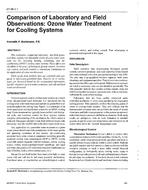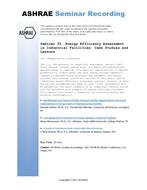Arctic communities are challenged by harsh environments, remoteness and lack of local energy sources. In many cases, nearly all energy used to meet electrical and thermal demands are generated from diesel generators and diesel-fired heating devices. With increasing fuel costs, it is essential to find alternative sustainable options for power and energy in such communities, which includes energy conservation and novel technologies. This paper focuses on a recent study performed at Canadian Forces Station Alert in the Canadian Arctic to reduce their global energy consumption and dependency on fuel by use of renewable energy and identifying the most pertinent and economically viable energy saving measures.
To perform the assessment, electrical consumption is monitored and an energy model of the station was developed in TRNSYS to identify key energy flows and potential energy saving opportunities. An analysis was done on four fuel-fired buildings connected to the station’s electrical grid. The identification of key energy savings opportunities such as upgrading lighting fixtures, controls and building envelope improvements as well as the impact of using a sea water heat pump system for space heating were investigated. It is envisaged that the sea water heat pumps could replace the fuel-fired heating system to further reduce the station’s dependency on fossil fuels.
It was determined that over 55% fuel savings could be achieved on the selected buildings studied by implementing traditional energy saving measures. Also, close to 70% energy savings could be expected by the additional use of a sea water heat pump for space heating; successfully demonstrating the potential for significant energy savings for Arctic communities to meet their electrical and thermal demands.
Citation: Cold Climate Conference, 2012
Product Details
- Published:
- 2012
- Number of Pages:
- 8
- File Size:
- 1 file , 1.4 MB
- Product Code(s):
- D-CCC12-32


